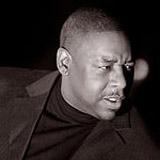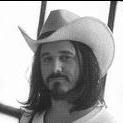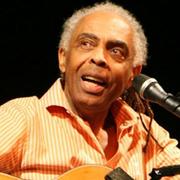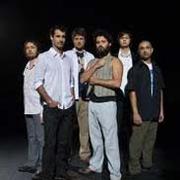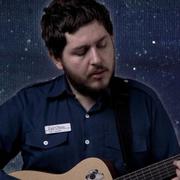Gilberto Gil
| 基本信息 | |||
|---|---|---|---|
| 姓名 | Gilberto Gil | 别名 | 暂无 |
| 国籍 | 巴西 | 出生地 | |
| 语言 | 性别 | 男 | |
| 生日 | 星座 | ||
| 身高 | 体重 | ||
Gilberto Gil-巴西文化部部长这个世界上既是流行明星又是政府官员的人一定不多,从这点上来说,巴西人吉尔伯托·吉尔(Gilberto Gil)称得上特别。60年代的巴西深受美国民权运动的冲击,吉尔与当时许多文人及音乐人决定要为本土文化尽绵薄之力,他把巴西的桑巴、bossa nova、民歌融合,创造出自成一派的乐风Tropicália,引领了一场“新音乐运动”,这番成就使其当选为国家文化部长。自从政务缠身以后,却开始发现“我听音乐的时间越来越少”,尽管如此,“还是挤了一点出来欣赏智利人的说唱和乌拉圭人的康东贝(Candombe,殖民时期的黑人歌曲),还有秘鲁人的本土乐。”如此勤奋努力令人敬佩,同时也为本国的外交活动带来了不少帮助,今年2月份狂欢节过后,一次别开生面的"流行外交之旅"即将展开。2004年3月2日吉尔出现在香港大会堂音乐厅"香港艺术节"的首晚演出上,以他扣人心弦的嗓音,将巴西及加勒比海的音乐融合,向“雷鬼之父”鲍勃·马利(Bob Marley)致敬。接下去还将一边以官方身份访问新西兰、澳大利亚、西班牙、葡萄牙、瑞典和丹麦等地,一边在这些国家地区的音乐舞台上一展风采。2003年的“拉丁格莱美”曾将吉尔评为最佳“年度艺人”。 by Richard SkellyMulti-instrumentalist, singer/songwriter Gilberto Gil joined his first group, the Desafinados, in the mid-50s and by the beginning of the 1960s was earning a living as a jingle composer. Although known mostly as a guitarist, he also holds his own with drums, trumpet, and accordion. He began playing the accordion when he was eight, and he listened to street singers in the marketplace around Salvador. By the end of the 1950s, Gil was studying business administration at Savladors Federal University and playing with a group called Os Desafinados. At this time he heard singer and guitarist João Gilberto on the radio and was so impressed that he immediately bought a guitar and learned to play and sing the bossa nova. He spent the early 60s composing songs for TV ads, and in 1964, he was in Nos Por Exemplo, a show of bossa nova and traditional Brazilian songs directed by Caetano Veloso. In 1965, he moved to São Paulo, and after singing and playing in various shows, he had his first hit when singer Elis Regina recorded his song Louvacao. He began to establish himself as a singer of protest songs, and he became very popular with Brazilians involved in the Tropicalia movement, which opened up native Brazilian folk music to other kinds of influences. The success of the single Louvacao inspired Gil to record an album of his own material with the same title.Gil made his first self-titled recording in 1966, but his first hit single didnt come about until 1969, with Aquele Abraco. His musical fusion of bossa nova, samba, and other styles was so revolutionary it frightened the countrys military dictatorship into arresting him, and thats when he headed to Great Britain. (He and Caetano Veloso were placed in solitary confinement while authorities figured out what they wanted to do with the pair.) After three years in England, where he had the chance to work with groups like Pink Floyd, Yes, the Incredible String Band, and Rod Stewarts band in London clubs, he returned to Brazil in 1972. He recorded Expresso 2222, which spurred two hit singles in Brazil, Back in Bahia and Oriente. After playing at the Midem Festival in France in 1973, Gil recorded Ao Vivo in 1974. A year later, he recorded with Jorge Ben for the album Gil & Jorge. In 1976, he toured with Veloso, Gal Costa, and Maria Bethânia and released the Doces Báraros album. For most of the rest of the 1970s, he recorded for a variety of Brazilian record companies until signing an international deal with the WEA group of labels in 1977. He toured U.S. colleges in 1978 and firmly established his place in the international jazz world with his albums Nightingale (1978) and Realce (1979) . He also released a double live album in 1978, Gilberto Gil ao Vivo em Montreux, recorded during his performances at the jazz and blues festival in Switzerland. In 1980, Gil teamed up with reggae musician Jimmy Cliff. The pair toured Brazil, and Gils cover of Bob Marleys No Woman, No Cry climbed to number one, selling 700,000 copies.Gil followed up in 1981 with Luar (A Gente Precisa Ver o Luar), one of his most acclaimed recordings. In 1982, he performed again at the Montreux Festival, but this time with Jimmy Cliff. He followed up with Um Banda Um (1982), Extra (1983), and Raça Humana (1984), the last recorded with Bob Marleys Wailers.In the late 70s, Gil became a prominent spokesman for the black consciousness movement then taking place in Brazil. In 1982, he had huge crossover success with Palco, which became popular in dance clubs and led to stadium tours of Europe. Meanwhile, back in the U.S., he would play mid-sized jazz clubs in New York City and Los Angeles. Gil celebrated his then two-decade career in 1985 with the album DIA Dorim Noite Neon (released in the U.S.), and released Gilberto Gil em Concerto, recorded live in Rio, in 1987.The early 90s saw Gil continuing his involvement in social and political causes in his native country, finding widespread support for his political stances, and he was elected to office in the port city of Salvador, his hometown, aka the Black Rome.A leader of the Tropicalia movement in Brazil in 1967 and 1968 along with artists like Caetano Veloso and Gal Costa, he and other musicians mixed native styles with rock and folk instruments. Because Gil fused samba, salsa, and bossa nova with rock and folk music, hes recognized today as one of the pioneers in world music. Among Gils other albums are Refazenda (1975), Gilberto a Bahia (1985), and Parabolic (1992). He released Acoustic for the Atlantic Jazz label in 1994. On Acoustic, hes joined by Carlos Fonseca on acoustic guitar and Jorges Gomes on drums and mandolin.
 加载评论内容,请稍等......
加载评论内容,请稍等......

